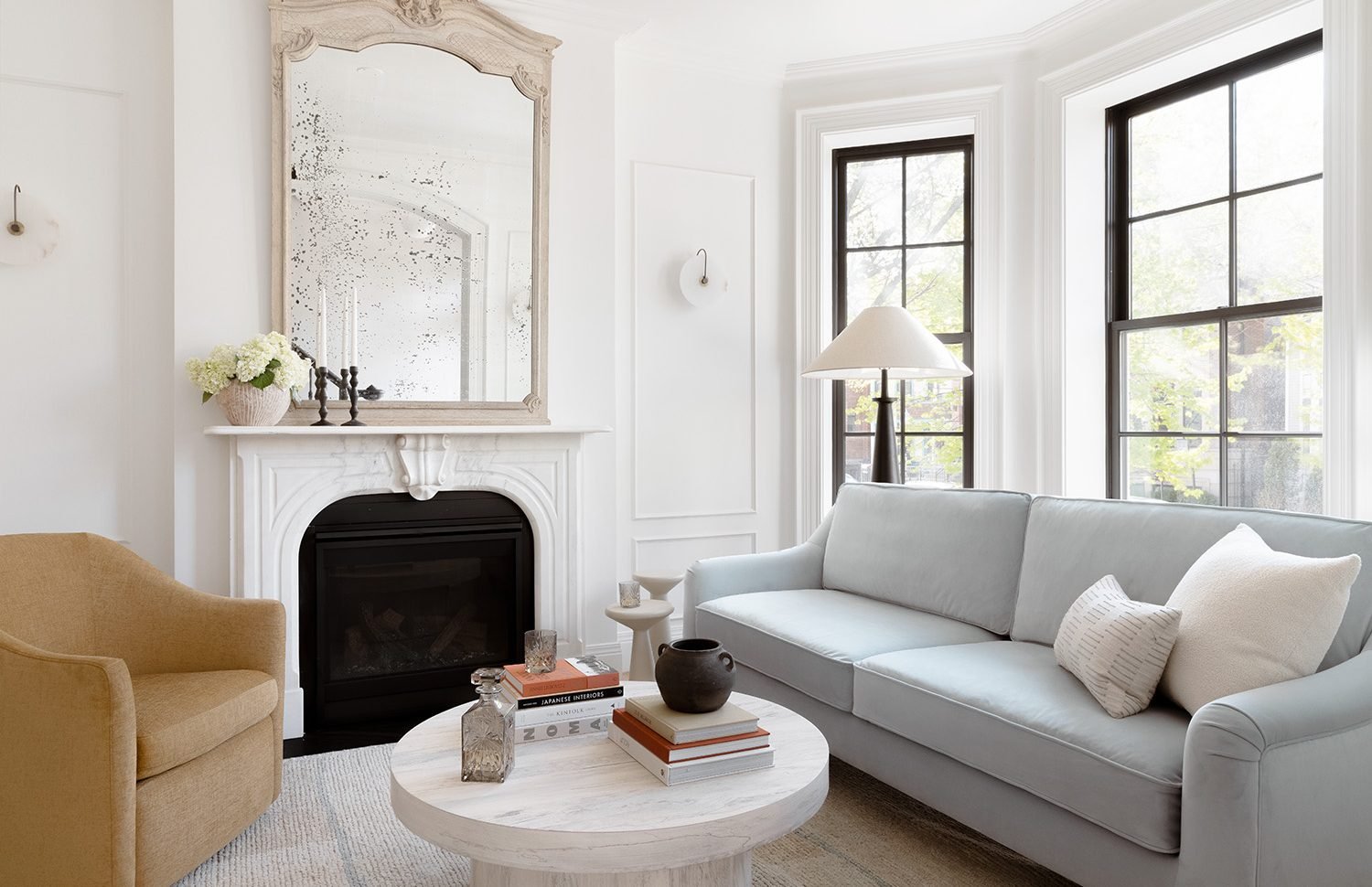It’s not the size of a room that matters — it’s all about how you make the most of it. That’s true for any place in your home, but it especially goes for the living room. Comfort is key in this space, especially because it’s the spot where you’re most likely to pass the time with friends and family.
That said, it’s not always easy figuring out the right configuration to make your living room feel just right. When you’re planning a room with more constrained square footage, it can be a bit like solving a puzzle. It might take a bit of toying around before you feel everything’s found its proper place, but once you’ve nailed it, a small living room will look elevated and intentional.
While the right design for your space will depend on the specifics of your room’s layout and your own personal preferences — like if, say, a sectional is an absolute must-have for optimal lounging — there are a some designer-approved tips that can make styling a small living room even easier. Here are few to keep in mind:
1. Go big, but edit
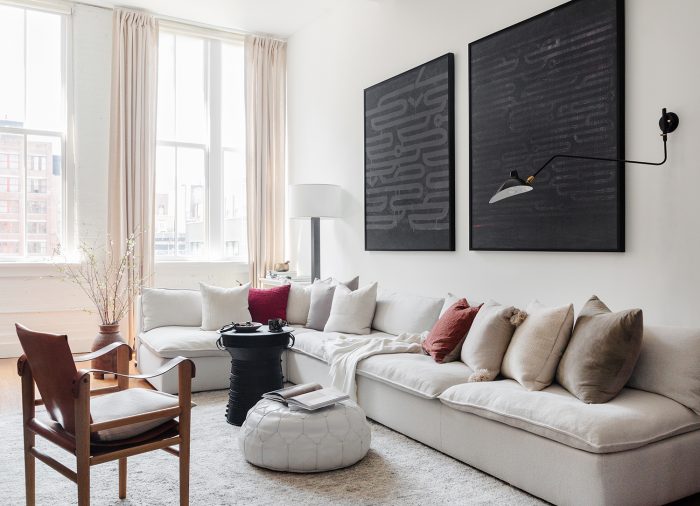
It might seem counterintuitive, but larger furniture and accent pieces can help maximize a smaller space. A larger area rug to anchor an entire seating area, for instance, will feel more at home than a smaller counterpart that barely spans the sofa. As for artwork, go grand with an oversized, statement piece of art versus a collection of miniature frames. But as you incorporate some of these large-scale pieces as focal points, pare back the little extras to create some breathing room in your space. The result will feel intentional, collected, and calm.
2. Pull double duty
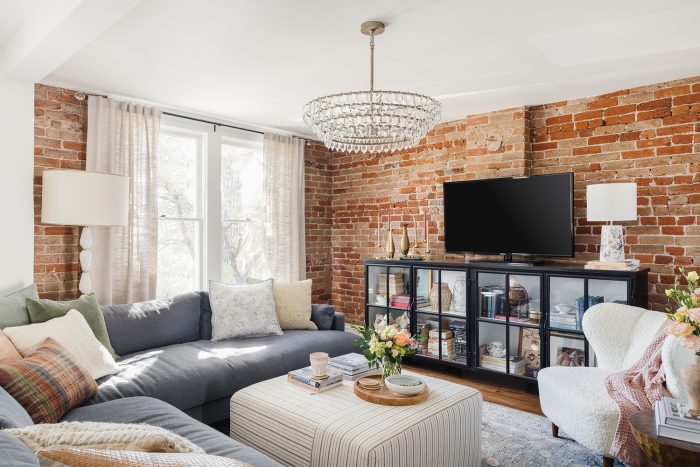
This is the oldest small space design trick in the book: Invest in furniture that pulls double duty, whether it’s a storage ottoman that doubles as extra seating and a coffee table, a TV stand with extra display shelving, or a bed frame with pull-out drawers. Almost every piece of furniture should serve multiple purposes in a tight apartment or small home — that way, the space still feels functional.
3. Get creative with your layout
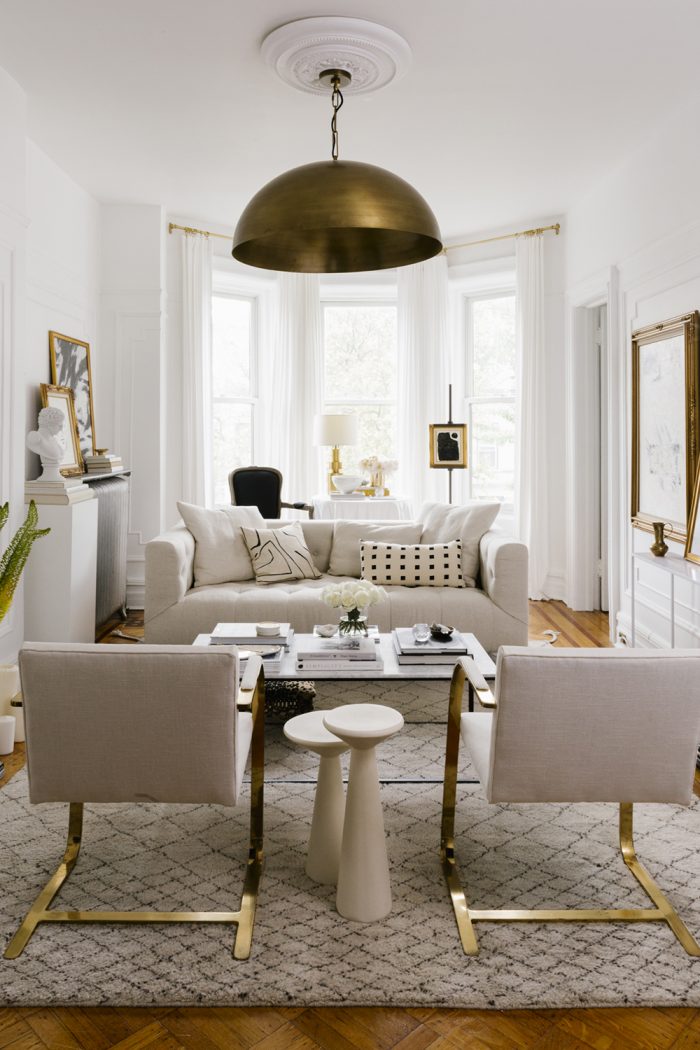
There’s a common tendency to line wall with furniture, especially in smaller spaces. However, this creates a really boxy and cluttered perimeter, while simultaneously leaving precious real estate in the center of your room empty and bare. Instead, be strategic with your layout, even if it means floating furniture off the walls or creating a conversational seating moment. Just be sure to maintain walkways to allow seamless flow through your space.
4. Go vertical

When in doubt, draw the eye up! What a small space lacks in horizontal square footage you can make up for in a creative vertical play to create the illusion of a bigger space. From floor-to-ceiling bookshelves and statement lighting to eye-catching artwork, going up elongates the room, adds extra storage, and makes the most of the space at your disposal.
5. Use smart storage

Perhaps one of the most crucial small space design tips: Avoid clutter! Strategically arrange baskets, trunks, or storage ottomans to stash spare blankets, kid toys, pet accessories, or corral books to create a sense of order and visual calm. Bonus points for pieces that can not only provide essential storage as well as pull double duty as extra lounging space, like this storage ottoman sectional from Interior Define.
6. Leverage contrast
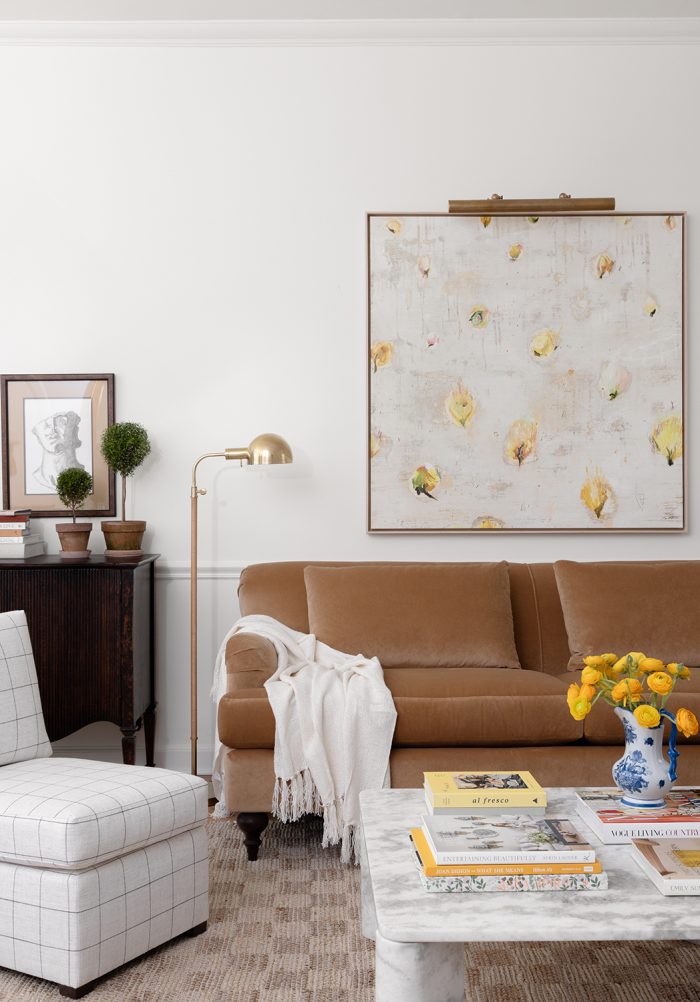
While you should do this in any space, it’s especially critical in smaller living rooms. Balance different silhouettes, colors, and textures to keep the eye moving and ensure nothing feels to “heavy” or one dimensional. This will help make a space feel larger than it actually is.
7. Use lighting to your advantage
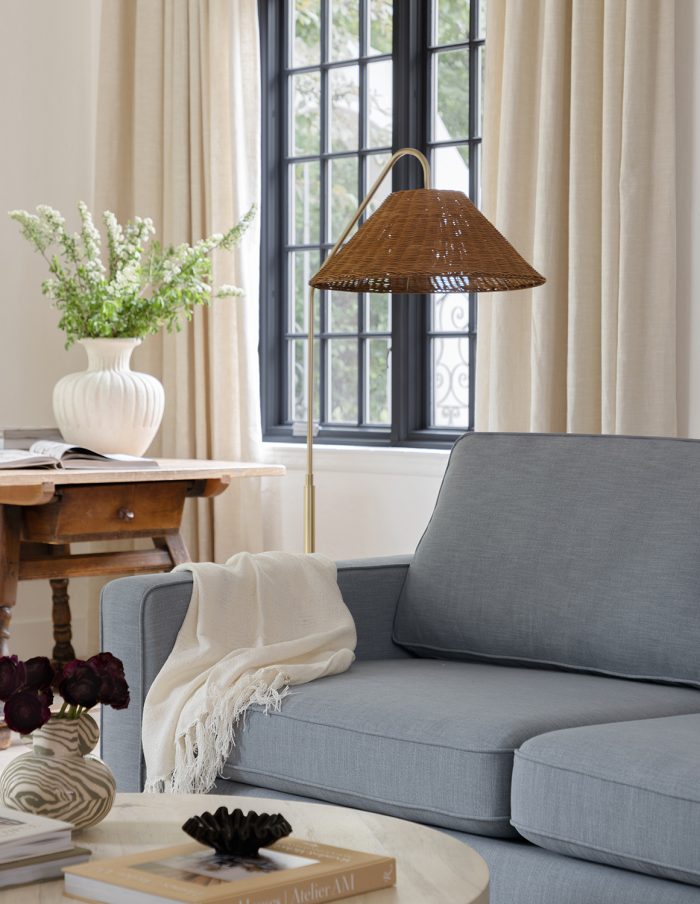
Honestly, there’s nothing a gorgeous pendant lamp or a sculptural wall sconce can’t fix. Invest in statement lighting to draw attention to your favorite areas, set the mood, and create intentional design moments in your home. Even if you’re in a rental, swapping out builder-grade light fixtures or investing in a beautiful floor lamp is a surefire way to make the space feel more like your home.
8. Add in color
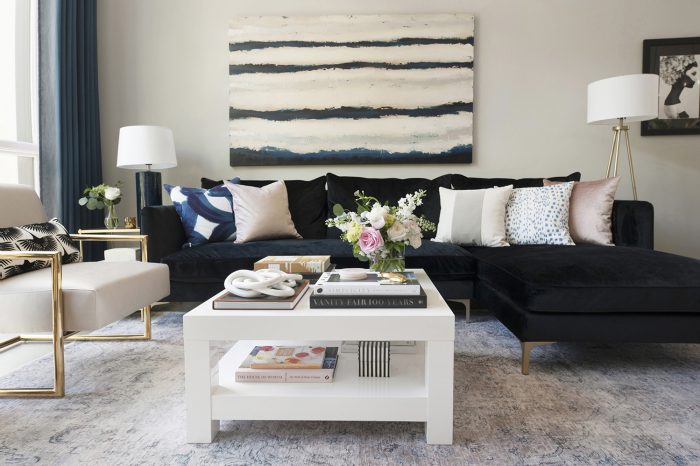
Darker upholstery — like moody velvet curtains — may seem like a counterintuitive choice to make a room feel larger. But this trick actually works! Strategically placed dark accents create dimension and depth, making a space feel more dynamic. A matching sectional, in the case of this living room, pulls it all together.
9. Go custom
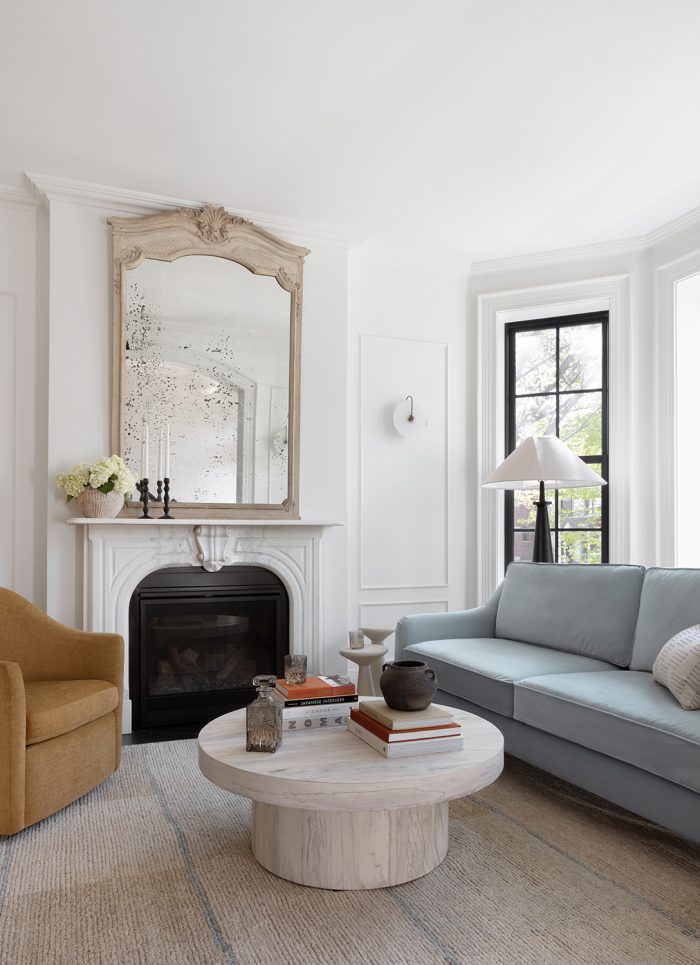
It’s easy to think you can’t find great pieces for smaller living rooms that fit your footprint, but you can! Consider Interior Define for chic, beautiful pieces — like sofas and sectionals — tailored to your unique floor plan. Consider us biased, but we think custom furniture is even better than a custom-altered pair of jeans (and that’s saying something).
10. Say goodbye to extra “stuff”
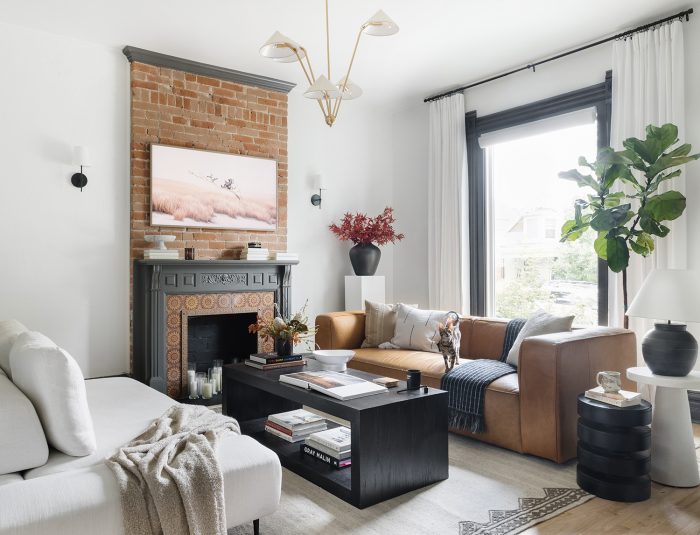
There’s an understandable temptation in small spaces to keep all the furniture and decor you’ve ever owned. This can lead to lining the walls with furniture, right next to each other. While you might really want a desk, for instance, forcing it into a cramped corner right next to your sofa can feel a little stifling as a result. The best thing to do: edit and pare back. It might require some tough decisions but saying goodbye to pieces to free up some wall space will ultimately result in a space that feels calmer, cozier, and more inviting.
11. Create visual height
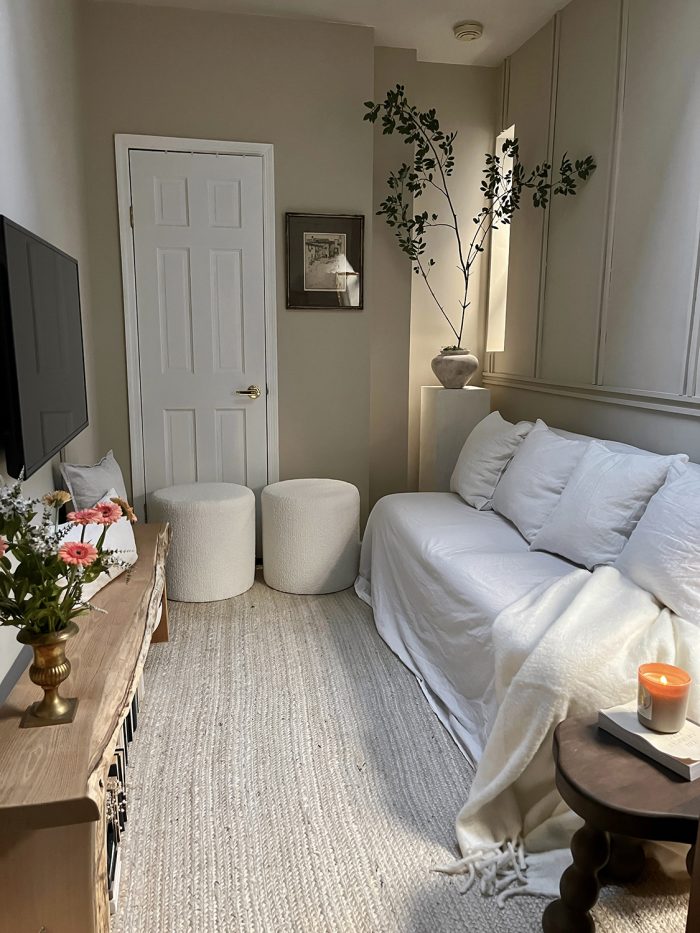
Even if your ceilings aren’t abnormally tall, you can create the illusion of extra height with tall plants, shelves, or bookcases. Especially in a narrow space like this, a few strategically placed long branches help to open up the room, in addition to adding a refreshing botanical look.
12. Hang a chandelier
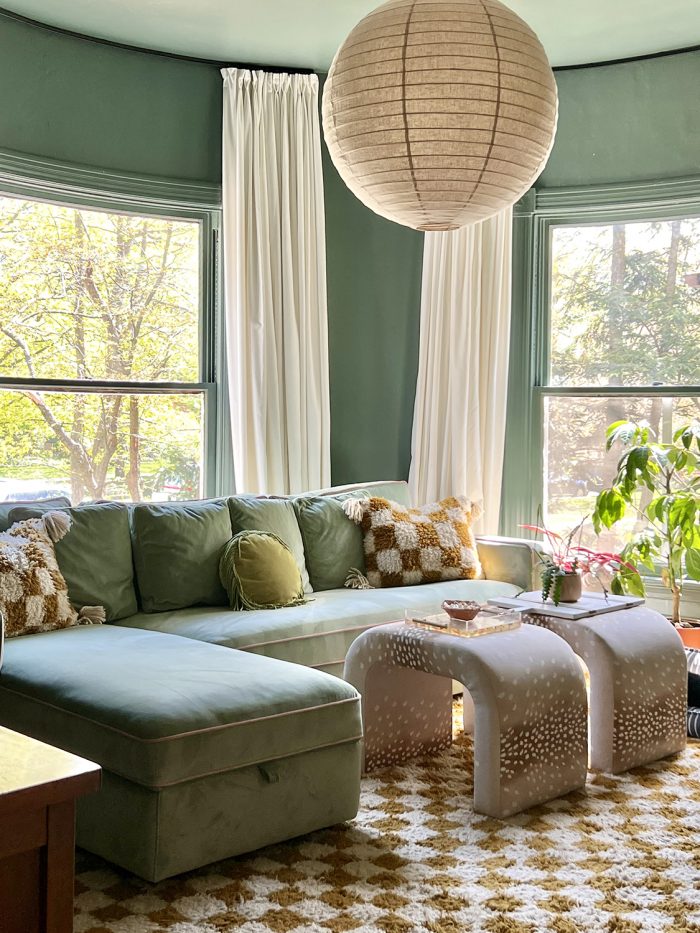
Sure, chandeliers might be thought of more as a lighting choice for a dining room, but they can make a great impact in a small living room. Be sure to choose one that suits the style of your space, and don’t be afraid to go bold. The paper lantern in this living room emphasizes the cozy, modern style of the space and draws the eye upward, making the ceiling look higher.
13. Embrace the gallery effect

It’s no secret that our designers love gallery walls, and for good reason: They’re a great way to express your personality in a space and create a ton of visual interest. The key to making it work in a small space is to be very deliberate about how you arrange your artwork; keeping things close and tight helps make the wall look more expansive than it really is. You want to fill the space you have with precision!
14. Take advantage of corners
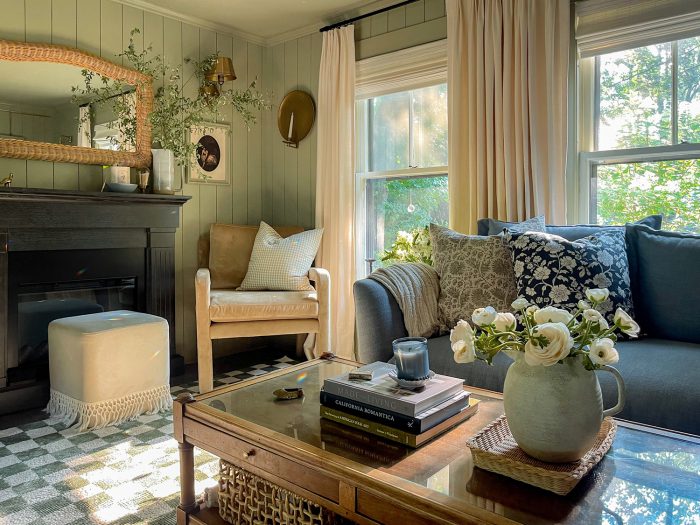
Instead of arranging pieces of furniture directly against the wall, nestle smaller pieces — like an armchair, table, or shelf, in a corner to help round out the space. This alignment helps to create a more intimate vibe and maximizes the square footage you do have. It’s also a great way to make your living room a little more “lived in,” especially when paired with wall art or even a sconce, as in this space.
15. Use pattern to add personality

Bring on the pattern-mixing! Even if you don’t consider your style eclectic, bringing in subtle, complementary patterns can both add dimension to your living room and infuse the space with a touch more personality than an all-solid design scheme might. Take this space for example: The Turkish style rug and brown floral drapes aren’t exact matches, yet pair well together and pop against neutral-colored furniture.
16. Install floor-to-ceiling drapes

Here’s one of our favorite tricks in the book: When you want your space to look elevated and your ceilings high, nothing does the trick quite like a good pair of floor-to-ceiling curtains. Consider buying them custom to perfectly fit your space; when they do, it can make a world of difference. Here, colorblocked curtains enhance floor-to-ceiling windows and add a splash of warmth to a largely grey space.
17. Make things cozy
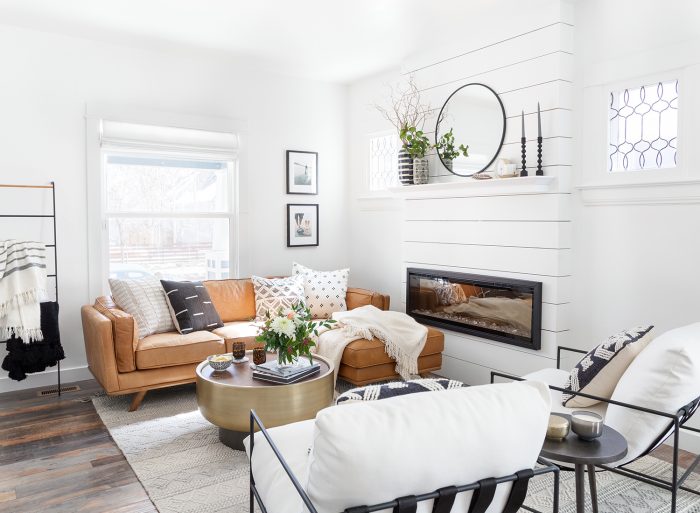
Consider the fireplace: This room feature is covetable for countless reasons, among which is the fact that it makes a perfect central focus point for a sitting area. So when your living room is on the smaller side, a fireplace is a great way to create a sense of intimacy and comfort.
18. Figure out your must-haves

As we mentioned before, when you don’t have an especially large area to work with, you might have to give up some pieces of furniture. That means it’s important to assess and figure out what you want your space to do for you. If you definitely need a space for working from home, then it may be in your best interest to add a desk to your living room — but that might mean choosing a sofa instead of a larger sectional to keep things feeling balanced. It’s all about understanding what can feasibly work with the space you have!
19. Have fun with built-in features
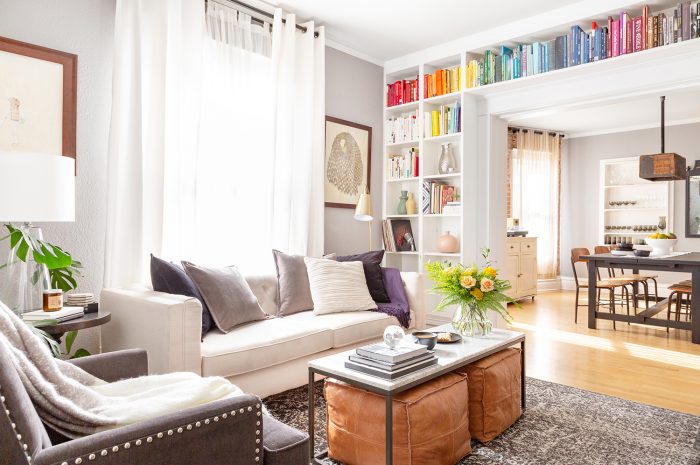
What’s not to love about built-in shelving? Not only does it give you plenty of functional storage space — great if you have an expansive library or record collection — but it also adds a lot visually without taking up any valuable floor space. We give it a 10 out of 10.
20. Put the emphasis on seating
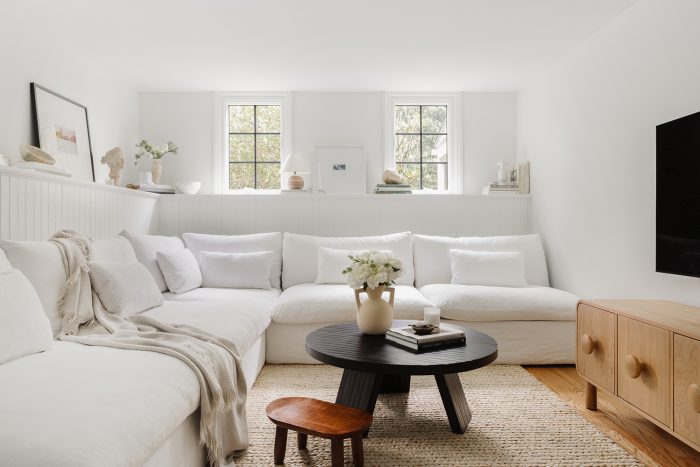
If you want your living room to be the place where you can prioritize relaxing and vegging out with your loved ones, then it’s only natural that you’ll want to outfit it with extra-comfy seats. And in that case, you might consider going all-out with a sectional that takes up virtually the entire room. When the space isn’t overwhelmed by a lot of little pieces of furniture, one big piece can look — and feel — right at home.
21. Stick to a cohesive color palette
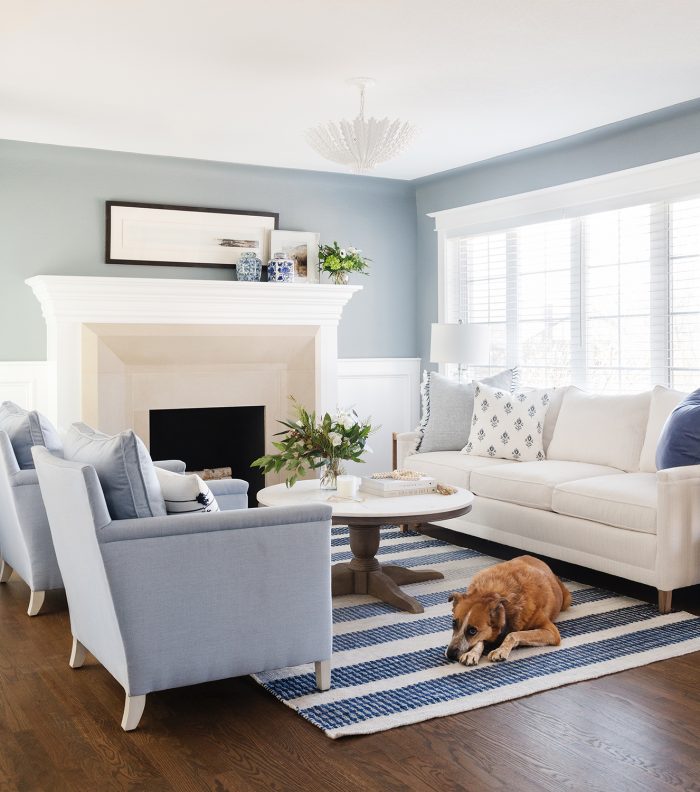
While we’re all for mixing and matching and trying the unexpected, when you’re looking for a cheat code to making a room look serene and pulled together, consider following a tightly edited color palette. Blues and whites give this small living room a relaxing, coastal vibe that makes it timelessly appealing.
Want expert advice on your own space, straight from an interior designer? Get started today with our style quiz.

